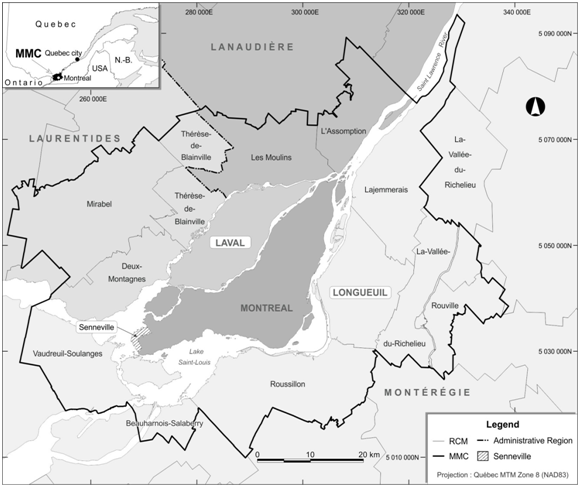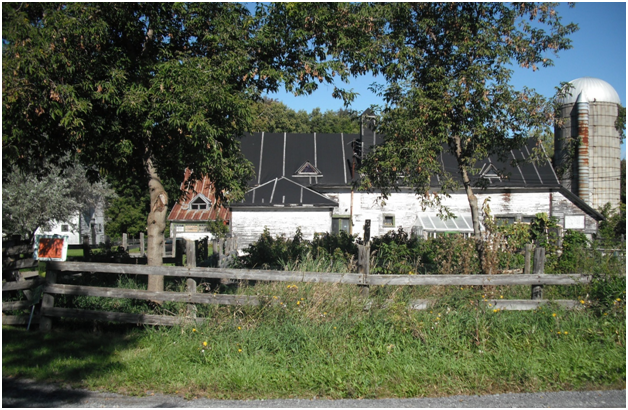MOJ
eISSN: 2381-182X


Short Communication Volume 7 Issue 4
1Agent for Climate Change, City of Joliette and City of Notre-Dame-des-Prairies, Canada
2Department of Geography, LAPLEC Laboratory, University of Liège, Belgium
3Adjunct Professor, Department of Geography, University of Montreal and School of Environmental Design and Rural Development, University of Guelph, Canada
Correspondence: Christopher Bryant, Adjunct Professor, Department of Geography, University of Montreal and School of Environmental Design and Rural Development, University of Guelph, Canada, Tel +1-226-337-3712
Received: October 21, 2019 | Published: December 17, 2019
Citation: Akkari C, Bousbaine A, Bryant C. Multifunctionality of farmland and farm activities & multi-actor involvement in agricultural development planning. MOJ Food Process Technol. 2019;7(4):132-134. DOI: 10.15406/mojfpt.2019.07.00232
This article deals with the conservation of farmland and its farm activities, and the role of their multi-functionality in increasing the potential for conserving good quality farmland and its farm activities. This is especially important given the fact that traditional land use planning has frequently not been able to conserve good quality farmland and large areas of such farmland have often been removed by governments and their planners to support the development of subdivisions and industrial parks. There have however been some substantial improvements in some jurisdictions such as in two of the provinces of Canada, viz. British Columbia and Québec. But even with special legislation to conserve good quality farmland, some land was still removed. Hence, as a very novel move at the end of the 1990s, the province of Québec suggested to its Regional Municipal Counties to support the development of a strategic development plan for agriculture for their agricultural reserves and to involve different actors who supported the conservation of good quality farmland and its farm activities because of one or more of the multiple functions that farmland can support. Successful efforts led to the involvement of multiple actors who supported the conservation of good quality agricultural land because such land also frequently supported multiple other functions of value to society. As an example, the municipality of Senneville at the western end of the Island of Montréal demonstrates this multi-functionality and the involvement of several of its farmers in undertaking actions, including in an Action Research process, to support the multiple other functions of their farmland and its activities which they communicated to their municipality and to other organizations which were also interested in conserving good quality farmland and its farm activities.
Keywords: conservation of farmland and farm activities; multifunctionality of farmland and farm activities; multiple actors; strategic development planning for agriculture
The role of agriculture seems never to have been so discussed in so many parts of the world as now, both in developed countries and in developing countries. Agriculture has been a major producer of foodstuffs for a very long time, and increasingly of healthy foodstuffs particularly in Food Land Belts around cities such as around Liège in Belgium and near Montreal, Québec, Canada, where there is a major project called SAM (Système Alimentaire Montréalais- Montreal Food System). At the same time, many citizens, food specialists and even farmers have become more and more preoccupied by the loss of good quality agricultural land to various types of urban development as well as the negative effects of so-called productivist agriculture on human health, water resources and even on attractive heritage landscapes, one of the attractions of many agricultural areas for tourism development (hence the term agro-tourism!), such as in several agricultural territories in Québec, Canada.
In many instances, land use planning has contributed to the takeover of good quality agricultural land because many planners and local and regional politicians have placed their priorities on population growth in their communities, and related subdivision development as well as the development of industrial parks.1 Money seems to be all that matters to many officials and professionals!
However, some communities and (in the case of Canada, the province of Québec) have made substantial progress in creating conditions in which many citizens’ perspectives on agricultural land and agricultural activities have begun to change substantially. In the province of Québec, agricultural reserves were created under the legislation to conserve farmland in 1978. However, there were still situations where agricultural land was removed from the agricultural reserves either because the province wanted to encourage other forms of development or by municipalities or Regional County Municipalities (RCMs) who persuaded the province to remove agricultural land from the reserves for similar reasons. This legislation was modified towards the end of the 1990s to include also the conservation of agricultural activities.2
Shortly thereafter, the Province of Québec decided to encourage its RCMs to undertake a PDZA (Plan de développement de la Zone Agricole – Development Plan for the Agricultural Zone). In other words, this implied the development of a strategic development plan for agricultural development in each of the agricultural reserves. A realistic strategic development plan for agriculture must take into account all the pressures and difficulties facing agriculture as well as the opportunities.
This also implies that the actors who should be involved in the discussions about agricultural development and the conservation of farmland and farm activities should also represent a broad range of different human values and priorities underscoring the different functions of agricultural land and farm activities. Indeed, the multifunctionality of farmland and farm activities has become increasingly recognized in many countries for instance in France and the U.K. and in many instances this multifunctionality has become an important factor in the conservation of farmland and farm activities.3–5 Thus, at least in the agricultural reserves in the Province of Québec, this involvement of such a broad range of actors has led in many instances to development plans that take into account the multiple functions, including the value of heritage landscapes6,7 for tourists and rural tourism, the obvious functions related to food production, the function of the conservation of water resources, and the function of encouraging citizens to visit and appreciate farms and farmers and also to develop other functions to attract local citizens to visit the farms. In some cases, citizens have been encouraged to bring their children to visit farms by creating small animal ‘zoos’ on the farms. Thus, in a development plan for agriculture it is important to involve, for instance, actors who are interested in what agricultural territories can provide for families particularly in territories near major urban agglomerations such as Montréal and Toronto in Canada.
In Figure 1, the map of the region of Montréal shows the location of the municipality of Senneville at the western end of Montreal Island in 2010. From the perspective of multifunctionality of farmland and farm activities, what is really interesting is the large area of agricultural land in this municipality. The farmers are very interesting and the majority of them have had no family antecedents in farming! They are particularly focused on the production of healthy foodstuffs. At one point in time, the group of farmers contacted Bryant to see whether they could come to his office at the Université de Montréal to talk to him about how their farming activities might be able to evolve to maintain their agricultural activity especially given the pressures to use some of that farmland for urban development. Instead, Bryant said he would prefer to go and visit them on their farms, which is what happened. As a result of this, Bryant and two of the graduate students in his Laboratory began a Research Action process with the farmers who essentially, after a major colloquium organized by Bryant and the graduate students for the farmers and creating different discussion groups with the farmers, began to take decisions about creating more sustainable agricultures.8,9 The farmers themselves for instance made a presentation to Senneville municipal council as well as to other organizations which were involved in development planning of other ventures around the Island of Montréal, to emphasize the importance of conserving multifunctional farmland and farm activities for the population in this part of Montreal island and even beyond.

Figure 1 Map showing the location of the municipality of Senneville in the Administrative Region of Montréal in 2010.
Conception and Creation: Marc Girard, cartographer for the Department of Geography, University of Montreal. Prepared for publications involving Christopher Bryant as author or co-author including initially for the Congress of ACFAS 2010.
It is also pertinent given the orientation of this short article to note that the farmers were also happy to have citizens visit their farms, and even to bring their dogs with them and take their dogs on walks around their farms and farmland, thus encouraging these citizens to appreciate the values of maintaining this farmland especially because of its production of healthy foodstuffs … and their appreciation of the landscapes supported by farming (Figures 1 & 2). The farmers also helped a social organization called Santropol Roulant whose colleagues farm a small parcel of land in Senneville. This organization is based in the center of Montreal, but its major purpose is to provide good foodstuffs to citizens in neighborhoods where there are many citizens who are far from well-off. This organization does this via its members; on the one hand, there are members who are reasonably well off and are prepared to pay a higher price for the foodstuffs, and on the other hand, there are other members who are in need and who can therefore purchase their foodstuffs at a much lower price because of those members who pay more than the ‘normal’ price.

Figure 2 Photo of a Sheep farm in the municipality of Senneville in the Administrative Region of Montréal. Photo taken by Christopher Bryant, 2010.
Thus, this recognition and development of the multi-functionality of agricultural land and activities can lead to an important increase in the multiple values associated with agricultural land and farm activities and what is the most fundamental effect is to increase the support for conserving farmland and farm activities.
None.
None.
The authors declare that there was no conflict of interest.

©2019 Akkari, et al. This is an open access article distributed under the terms of the, which permits unrestricted use, distribution, and build upon your work non-commercially.